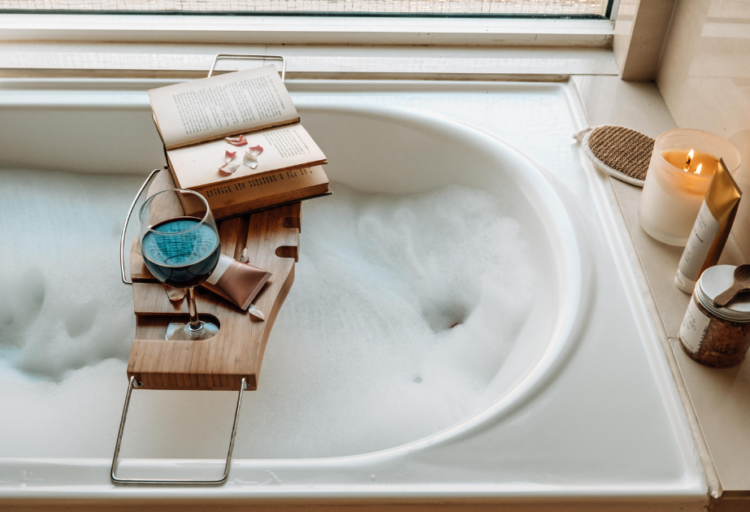A self-care checklist is more than a to-do list. It reminds you of the beautiful habits you’re creating and the person you’re becoming.
Some days you’ll wake up and feel light, like a breeze, like everything will be okay. On other days, you’ll feel gloomy, and it might feel like you’re repeating the same sad song repeatedly. Both days are part of your experiences, representing everything you’ve been through, whether good or bad. These days are also a way forward to what life has to offer. Although the bad days make it seem like no good is going on, you need to remind yourself of all the progress you’re making with your self-care.
A self-care checklist doesn’t need to be a fancy list or something that will appeal to others. It still matters whether it deals with basic hygiene or steps to reaching a specific goal. This is important because it has a purpose for you, and it is your guide. If done with intentions, you’ll see self-care beyond the checklist. Even after these changes become habits, a checklist encourages you through your progress. Keep reading to discover a self-care checklist to ease your mind.
Slow Starts Still Have Beautiful Endings
Realistic Reads

Building Your Self-Care Checklist
You’re looking forward to how self-care can change your life. There is no doubt about it. However, everything you build needs a foundation, or else it can come crashing before your eyes. Introduce the new changes slowly and practice gratitude along the way.
Treating your checklist as part of your life journey is essential. This is not something to do just because you were told to. Remember, you’re doing it for yourself; therefore, the motivation behind creating one should be about you. Although taking care of yourself can benefit other relationships, the priority is still YOU.
Whether you’re drawing inspiration from the self-care checklist template provided or using it as is, remember these two things when it comes to feeding your mind.
- Purpose: Feel, don’t suppress.
- Goal: Mental well-being.
You need to stay realistic about the plans and goals that you have for yourself as you start this journey. When you’re realistic, it is easier for these changes to become habits.
Personalizing Your Self-Care Checklist
The self-care checklist template is an excellent guide and a fantastic start to your care.
A great exercise to pinpoint your needs is to write it down. Not only is this a form of self-care, but it will help you make notes of the basics and even deeper emotions.
First, write about your daily flow from the perspective of someone who would spend the whole day with you. It can be difficult to be gracious to yourself even when you’re overwhelmed. Writing from someone else’s perspective is great to see how overwhelmed you are.
Second, take note of the unhelpful habits you’ve developed and how you plan on changing them. Additionally, write down the things you believe are self-care that you do daily, if any. When doing this, refer to the quote at the beginning of this post. You’ll still get there with a slow start; therefore, take your time.
This exercise does not need to be done in one sitting. You can start slowly, build your self-care checklist, and modify it. The goal is to ease your mind, not feel overwhelmed.
Self-Care Checklist Ideas for Mental Reset
There is so much you can do to calm your mind, but when you have a lot going on, it is difficult to know where to start. These ideas are a great way to focus your energy on your mental wellness and direct attention to that area of your life.
Meditating and exercising are great techniques to nourish your mind. In addition, other relaxing methods to free your mind are thoroughly discussed in this article.
1| Start with the Basics
Sometimes, you can look past the simple things, which are also part of self-care. Starting with the basics helps you notice the steps you take each day that are important to you.
An example would be making your bed or spending some time on your hygiene routine in the morning. This is especially helpful when you have trouble envisioning how self-care can help you long-term.
2| Cuddling with Your Pet
Pets are excellent companions and are great for support. Spending time with your pet is a great way to improve mood and reduce anxiety.
The interaction encourages touch and connection. While staying connected with people you don’t live with can be challenging, interactions with your pet can help calm your mind and brighten your day.
If you don’t have a pet, you can offer to pet-sit for a friend or a neighbor. You could also consider volunteering at a shelter.
3| Plan Things Ahead of Time
This promotes writing things down, which is an amazing exercise for your mind. It becomes more vivid and clear when you plan things.
For instance, your checklist can involve planning a self-care day for yourself. By doing this, you’re increasing the chances of fulfilling your self-care plans.
Planning is also a great way to reduce stress and anxiety, as it provides structure to your thoughts. Plan it even if you believe it is minor. It is great when reevaluating goals and making changes.
4| Go Somewhere Peaceful
When you close your eyes and let your mind guide you to a peaceful area, where is it? For some, it might be an art gallery; for others, it might be camping in the woods.
Sounds and smells can be therapeutic and can be found in different areas. If you enjoy the sound of waves, you may find peace at the beach. If the smell of coffee appeals most to you, spending some days in a café might be helpful to you.
5 | Make Note of What Is Within Your Control and What Isn’t
Shifting the focus to things within your control helps you avoid stress, anxiety, and anything that can trouble your mind. Remind yourself that certain occurrences are beyond your control. For instance, what someone else thinks or what happened in the past are all things that you can’t control.
Taking this approach eliminates the mental burden that some people carry unknowingly. Free yourself and your mind by letting go of uncontrollable things. Whenever you face a situation that worries you, ask yourself, “Is this something I can change?” This prevents overthinking, so you can focus on what is important.
6 | Do A Relationship Cleanse
External factors, such as the people you surround yourself with, can contribute to worsening your mental health. If you notice this, start voicing your concerns. If they’re ignored, it is time to start letting go.
This will be painful, and it is important to note that your self-care journey won’t always be pleasant. You may need to face difficult situations and emotions, but they all lead to a healthier lifestyle.
7 | Maintain Good Sleeping Habits
The proper function of the brain requires good-quality sleep. Depriving your brain of this increases the risk of developing or worsening mental health conditions.
This is easier said than done, especially with a busy schedule. However, you can do it. Start by incorporating bedtime rituals that can promote better sleep, such as stretching, journaling, or meditating. Do something comforting that matters to you and can help you unwind after a long day.
8 | Schedule Time Alone
Social interaction is an excellent stress-relieving activity. It helps your mental health as these interactions can be comforting and therapeutic. But you’ve probably heard too much of a good thing isn’t always best. It can quickly get overwhelming, especially if you’re practicing escapism.
Additionally, if you are an introvert, you don’t need to drive yourself crazy by attending every social event and filling your calendar with gatherings. Do it all in moderation and listen to your body so you know when to take time for yourself.
9 | Discover Something New
It might be unusual to someone else, but if it brings meaning to you, then it is worth doing. Don’t let fear stop you from trying something that makes you happy. If you find comfort in paintings, you can express yourself that way. You don’t need to be good at it to consider it.
10 | Change the Colors Around You
Just like certain sounds and smells, colors can improve your mental health. Sometimes, you’ll even hear people describing their mood with a color, like “feeling blue.”
Is there a color that makes you happy? You should include that color around you to evoke more positive feelings. It can be the decor of your home or your wardrobe.
Self-Care Checklist Template
This template can serve as a guide for those who want to get started on their self-care journey. You’ll be motivated to start doing the things you love more often.
Remember, believing that allotting your time to self-care is a waste could critically impact your well-being. Physical and mental exhaustion can occur as a result.
Productive days without self-care can become mundane and self-destructive. To value self-care is to understand its definition for yourself and your lifestyle. Use this self-care checklist to help you achieve your personal self-care goals.





Leave a Reply